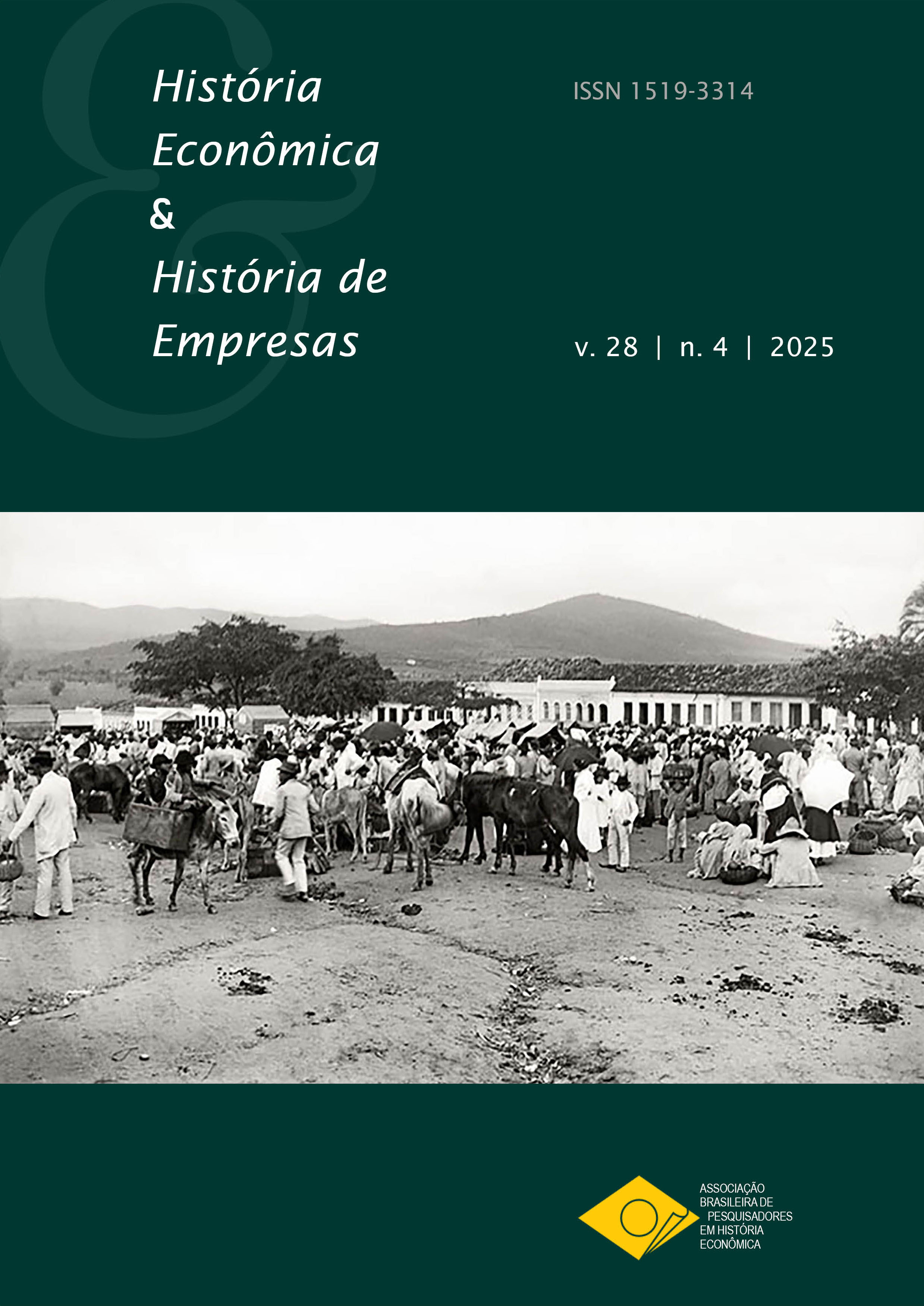Economic history of the Capitania do Rio Grande do Norte: contemporary themes and historiographical debates
DOI:
https://doi.org/10.29182/hehe.v28i4.1085Abstract
The aim of this article is to outline key aspects of the economic history of the Captaincy of Rio Grande do Norte, from the coast to the sertão (hinterland), through an analysis of production systems, commodity circulation, land use, and labor practices. The research framework emerges from classical debates in Potiguar historiography and contemporary themes in Economic History—such as land tenure, demography, institutions, property rights, and mercantile practices—among others. Methodologically, we adopt a product- and labor-centered approach, examining practices related to livestock raising, extractivism, plantation agriculture, and fishing activities. This perspective reveals patterns of commodity circulation and mercantile dynamics within this spatial context, while uncovering mechanisms of wealth accumulation and property formation by diverse social actors. The documentary corpus includes population and trade maps, legislative records, government reports, petitions for sesmarias (colonial land grants), inventories, and wills. Most sources are held by the Instituto Histórico e Geográfico do Rio Grande do Norte (IHGRN) in Natal, the Biblioteca Nacional(National Library), and the Arquivo Nacional (National Archives) in Rio de Janeiro, with additional materials accessible via the SILB Platform (Sesmarias do Império Luso-Brasileiro).
Downloads
Downloads
Published
How to Cite
Issue
Section
License
Copyright (c) 2025 Thiago Dias

This work is licensed under a Creative Commons Attribution 4.0 International License.
Authors retain copyright over their work, granting the journal only the right to its first publication. In addition, they are authorized to enter into separate additional contracts for the version of the work published in this journal, provided that the initial publication in this journal is acknowledged.





